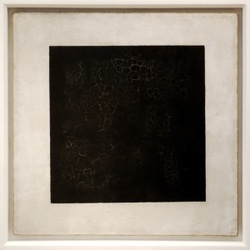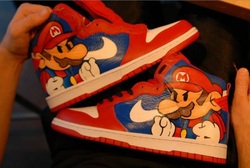
We encourage the compilation of a Black List of institutions that treat artists in an unfair manner.
This will be an internet-based, open read/write access database. We imagine a location based search and a discussion forum. Now, we define an institution as "unfair" if it
1. charges fees
2. delegates its work to artists
3. sets up too strict conditions
4. offers no adequate reimbursement
1. Charging fees
This practice has been known for quite some time, predominantly from vanity galleries and 'open calls' for artists. A charge of $20 or more for an application and the submission of some images. Often these calls are coupled with prize money. Since artists need to be seen, such calls often generate numerous applications. This is questionable at best: the money is taken from the weakest group, i.e. that with the already lowest income. Moreover, this approach cannot be compared to an ordinary deal like 'buying a chance'. The chances cannot be quantified beforehand: most people will receive a rejection in an untransparent jury process. Ultimately, the winners take it all: the careers of the chosen few will be boosted at the expense of the rejected majority. For the institution it is a way to generate revenues and reduce the financial risks.
2. Delegating work (which should be taken care of by the institution) to artists
There is a strong tendency to let the artists contribute to all kinds of work related to a show, from advocacy to writing texts for catalogs, designing posters and flyers, taking photos, paying for insurance and transportation and so forth.
3. Setting up too strict conditions in a cooperation
Contemporary artists have to spend a considerable amount of time on paper work. The rise of the curators has led to a demand of increasingly complex conceptualizations of art to make it "fit" different curatorial concepts. Artists face complicated, non-standard application processes (being asked for extensive data like CVs, project descriptions, calculations, or artist staments).
This goes along with practical problems, like receiving little support during the installation process during the preparation of a show. Especially in residencies, artists face additional responsibilities like
contributing to an (unpaid) supporting program (artist talks, panels, guided tours, teaching).
4. No adequate reimbursement
This is a tendency in all fields of the arts and the creative industries in general. The imbalance of "supply and demand" of jobs (fine arts: exhibition possibilities) makes artists vulnerable to exploitation. It
should be a given to get paid for one's work, but in many cases things are different. Sometimes, this is explained by tight resources, or alternatively the compensation is seen in the (supposed) career boost. In any case, it has to be conceded that many artists are willing to work for free.
We want to emphasize that this idea of a Black List is not intended as a form of institutional critique (so there might be a white list, too). It is well known how institutions act and how they are embedded in the art system as a whole. Rather, the pressing questions we seek to answer are why artists do conform to these conditions, and what are the possibilities for improvement? The Black List aims at putting institutions under more scrutiny by a straight, practical approach. It is twofold: Institutions are confronted by their practice made public. Artists are challenged to take a position on which working conditions they are willing to accept. Both outcomes are in favor of a discourse on the working conditions of artists.
This will be an internet-based, open read/write access database. We imagine a location based search and a discussion forum. Now, we define an institution as "unfair" if it
1. charges fees
2. delegates its work to artists
3. sets up too strict conditions
4. offers no adequate reimbursement
1. Charging fees
This practice has been known for quite some time, predominantly from vanity galleries and 'open calls' for artists. A charge of $20 or more for an application and the submission of some images. Often these calls are coupled with prize money. Since artists need to be seen, such calls often generate numerous applications. This is questionable at best: the money is taken from the weakest group, i.e. that with the already lowest income. Moreover, this approach cannot be compared to an ordinary deal like 'buying a chance'. The chances cannot be quantified beforehand: most people will receive a rejection in an untransparent jury process. Ultimately, the winners take it all: the careers of the chosen few will be boosted at the expense of the rejected majority. For the institution it is a way to generate revenues and reduce the financial risks.
2. Delegating work (which should be taken care of by the institution) to artists
There is a strong tendency to let the artists contribute to all kinds of work related to a show, from advocacy to writing texts for catalogs, designing posters and flyers, taking photos, paying for insurance and transportation and so forth.
3. Setting up too strict conditions in a cooperation
Contemporary artists have to spend a considerable amount of time on paper work. The rise of the curators has led to a demand of increasingly complex conceptualizations of art to make it "fit" different curatorial concepts. Artists face complicated, non-standard application processes (being asked for extensive data like CVs, project descriptions, calculations, or artist staments).
This goes along with practical problems, like receiving little support during the installation process during the preparation of a show. Especially in residencies, artists face additional responsibilities like
contributing to an (unpaid) supporting program (artist talks, panels, guided tours, teaching).
4. No adequate reimbursement
This is a tendency in all fields of the arts and the creative industries in general. The imbalance of "supply and demand" of jobs (fine arts: exhibition possibilities) makes artists vulnerable to exploitation. It
should be a given to get paid for one's work, but in many cases things are different. Sometimes, this is explained by tight resources, or alternatively the compensation is seen in the (supposed) career boost. In any case, it has to be conceded that many artists are willing to work for free.
We want to emphasize that this idea of a Black List is not intended as a form of institutional critique (so there might be a white list, too). It is well known how institutions act and how they are embedded in the art system as a whole. Rather, the pressing questions we seek to answer are why artists do conform to these conditions, and what are the possibilities for improvement? The Black List aims at putting institutions under more scrutiny by a straight, practical approach. It is twofold: Institutions are confronted by their practice made public. Artists are challenged to take a position on which working conditions they are willing to accept. Both outcomes are in favor of a discourse on the working conditions of artists.

 RSS Feed
RSS Feed
